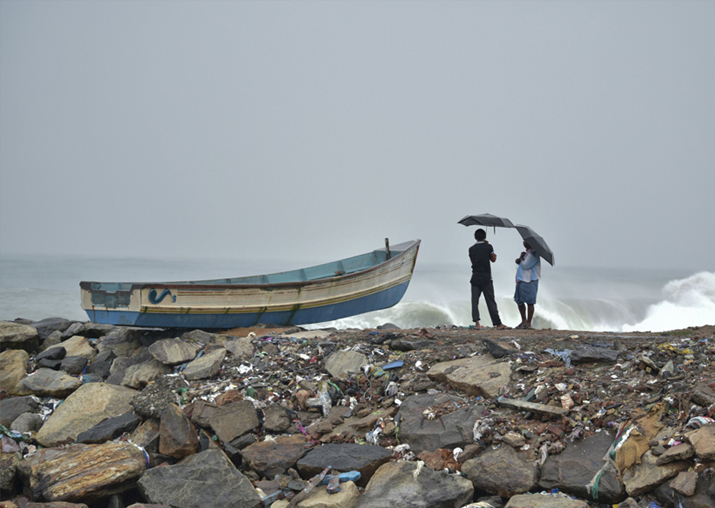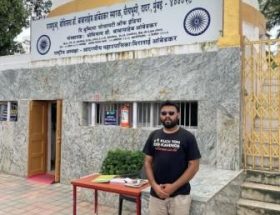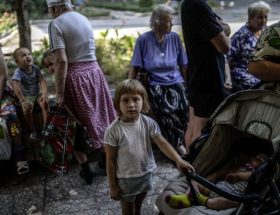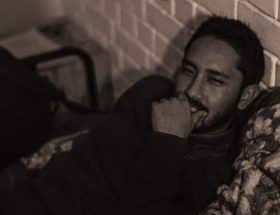Meera and Pranav Jeevan P
‘Mukkuva’ denotes ‘fisherman’ caste in Kerala, considered among Other Backward Castes (OBC) in the National list and Other Eligible Castes (OEC) in the State List. Most of this community is limited to coastal areas of the state, and engage in the occupation of fishing. Here, it was caste that determined your entire life. It determined your future partner, it determined the schools you went to, it determined your friends and acquaintances and your aspirations.
Local fishing boats went from one beach to another at times and this enabled geographical mobility and social mobility among people of the same community of nearby coastal areas. This enabled marital relations between people of different coastal areas and when it came to searching a partner for someone, people usually searched for a partner in the same coastal area or in the area where their boats frequented. There was mostly one lower primary school and one upper primary school in the area, which were government schools and most of the children in the area would go to these schools only.
Fishing was an occupation that came hereditarily and by the time a boy reached the age of 14, he would join his father in fishing, and by the time he turned 16, he would have started earning by himself. This also meant that he would not attend school and would drop off before class 10. Since the boys who started earning would automatically look for partners by the age of 20, girls would also drop off from education by class 8 or 9. No one took much interest in education or reading since their aspirations were limited to having their own boats and building their own houses.
The Middle East exposure, which made the better off castes to get themselves more educated, touched this caste only peripherally. Those who managed to pass class 10 and later class 12, would go on to engage in fishing abroad or would learn the skills of an electrician or a plumber, and would do the same abroad. Those who learned these skills would pass it on to someone in their family and would take him abroad as well. This meant better standards of accommodation and quality of lifestyle which later came to influence the housing and lifestyle of those who continued to work as fishermen as well. Fishing was limited to sustenance and was never about value addition or fishing as an industry. They went to school, learned fishing, built houses, had children, and chose to teach fishing to the next generation as well.
Though Vedavyasa’s birthday continues to be celebrated as Guru Poornima, owing to the myth that Vedavyasa’s mother was a fisherwoman, it never made them take up books. The women of the community restricted themselves to the patriarchal roles of childbearing and housekeeping and never had aspirations of a job or being independent. Though with time, girls have started going to schools and colleges, they continue to limit themselves to the aspiration of an NRI or a relatively well-off husband, and have not been empowered enough to think of being economically independent.
Even in the relatively urban spaces in Kerala, the presence of caste could be felt when observed closely. From caste-specific matrimonial advertisements to names of restaurants and villages, we see caste being explicitly invoked. But the performance of caste in the public work spaces and government offices, which were once monopolized by Savarnas, has changed. Savarnas usually occupy the most powerful positions in most organizations and keep the Dalit-Bahujans below. Even while eating, people mostly eat in batches with their caste brethren. Sharing of food between castes rarely happens as Savarnas are very careful to not eat the food prepared by their low-caste colleagues. The powerful and invisible network of Savarnas provides them the cultural and social capital to access more opportunities and resources that are entirely outside the purview of first-generation Dalit-Bahujans. This reflects in promotions and accolades which are showered on the Savarnas that they weaponize against the Bahujans in the name of meritocracy.
Even when Dalit-Bahujans go to banks to open accounts for scholarships, the bank managers who are mostly Savarnas try to disrupt and delay the process. Many deny them access to formal banking facilities citing lack of documents as they do not want Dalit children to access education. Even when trying to buy land or a house, the caste is first enquired and most transactions happen within castes. If, by chance, a Bahujan finds himself in a place surrounded mostly by Savarnas, he gets no support from his neighbors. There is an unsaid social exclusion that is always present against them. In most urban spaces, we see residential houses grouped caste-wise. We also see political favoritism playing a role in the development of areas where Savarnas live. They get the best roads, uninterrupted electricity, water and communications, and other amenities, while Dalit-Bahujans are moved to the margins devoid of this infrastructure, even in towns and cities. How fast you can get an electricity connection depends on where you live, which is indirectly linked to your caste. Many Dalit families are housed in ‘colonies’ which are underfunded and underdeveloped. The schools which their children go to are sometimes devoid of teachers and funding. Even kids in schools openly ask the castes of their classmates. Teachers have a habit of assuming Dalit children as less meritorious. We also see a resurgence of adding caste surnames among the Savarnas today.
Even the political parties make sure that there is a Savarna dominance in leadership and power positions. When a constituency is up for election in a reserved seat, they find the least qualified and the most malleable candidate who they can manipulate, even though there are other well-qualified and assertive candidates from the same community. This serves two purposes; firstly, the Dalits who are vocal and assertive will never come to power to threaten their hegemony, and secondly, it reinforces the narrative that reserved seat candidates coming from these castes are unqualified and lack the skills to be a good representative.
Even today, we hear news of honor killings and untouchability being practiced in various places of Kerala. We see temples which are not open to Dalit-Bahujan-Adivasis. We see that despite being a society that claims to be educated and literate, the social fabric of Kerala is tied with the threads of caste and it becomes visible when you look closely at the day-to-day social and structural interactions that happen here. The first step in trying to annihilate caste is to understand that it still exists and operates within our society.
~~~
Meera is a Delhi-based activist working in the field of education. She is also a solo traveler and a fitness enthusiast.
Pranav Jeevan P is currently a PhD candidate in Artificial Intelligence at IIT Bombay. He has earlier studied quantum computing in IIT Madras and Robotics at IIT Kanpur.
Picture courtesy: the internet.










